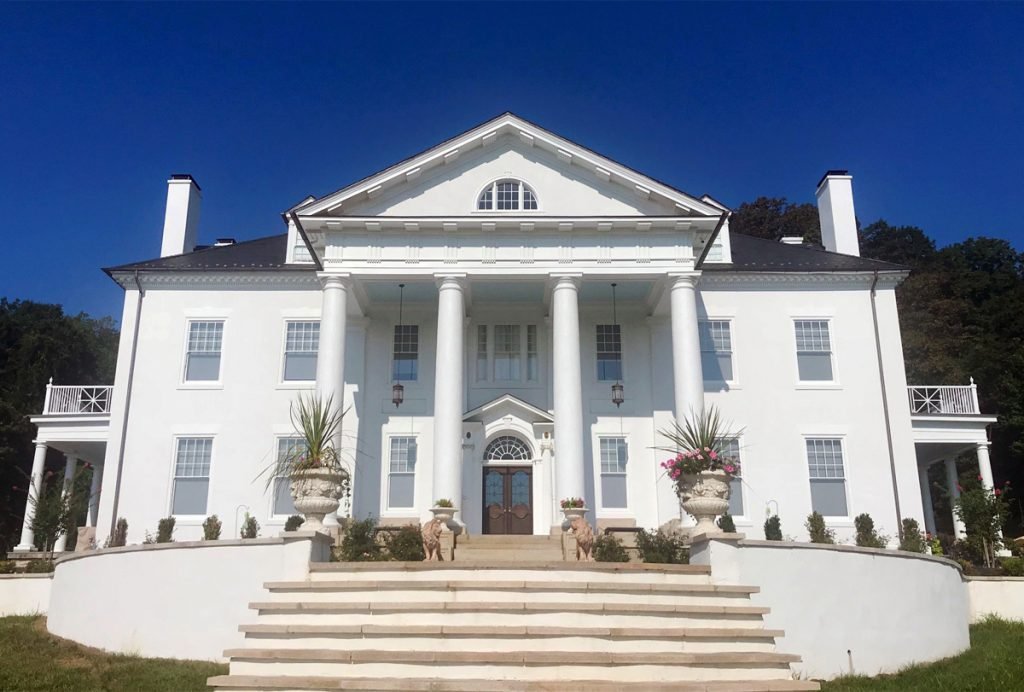The Selma Mansion plantation, located in Loudoun County not far from Leesburg at the base of Catoctin Mountain, had been abandoned for more than a decade. The plantation, which was once a hub of economic and social activity, had been abandoned for many years, allowing creeping vines and degradation to take over the land. No need to worry, though; this isn’t another depressing tale of abandoned museums and historic sites. Now that it has been purchased and refurbished, the Selma Mansion can be seen by the public once more.
Despite its dilapidated appearance after being abandoned, Selma has maintained a certain grace.

Pride in this old house probably stems from the stories told about the ghosts and echoes that still linger in the rooms where once there was peace and quiet. What makes a stunning structure so unique is that it retains its beauty even as it falls apart. Somewhat frightful, but undeniably impressive.
In 1815, Selma Plantation’s original manor house was constructed by Armistead Thomson Mason, a grand-nephew of the well-known Virginia statesman George Mason.

It was originally a portion of a 10,000-acre property that Mason’s great-grandmother, Ann Stevens Thomson Mason, bought in 1741, making the Masons pioneers in the Leesburg region. Yes, this stunning residence has roots in the colonial era of Virginia.
After serving as a senator for the United States from 1816 to 1817, Mason settled permanently in the nearby town of Selma, making him a prominent resident in Leesburg.

After marrying Charlotte Eliza Taylor on May 1, 1817, he and his new wife had their lone child, a son, in 1819. Regrettably, he was also the first of many individuals with ties to Selma to meet an untimely end.
A political dispute between Mason and his cousin, Colonel John Mason McCarty, culminated to a duel on February 6, 1819, and Mason’s death. After being shot once, Mason was dead, but McCarty managed to get away.

Although the building had stunning design and a bright beginning, tragedy would eventually befall it.
Charlotte Mason stayed at Selma after her husband died, raising their young son, Stevens Thomson Mason, Jr., who would eventually become the only heir of the family’s wealth.
Meanwhile, not long after the fatal duel, McCarty relocated to a place named Strawberry Plain, located not far from Selma. McCarty was killed in a hunting accident while pursuing game along the fence line that divided the Mason and McCarty holdings, so despite their proximity, the families never reconciled. After such a tragic event, it’s logical that the families wouldn’t speak to each other again. There is, however, a poetic irony in the man traveling directly along the line that separates them.
To get around town, young Stevens Mason typically rode a tandem of horses, earning him the reputation as a dashing young man.
But, his irresponsible behavior led to a loss of income, and he was ultimately forced to sell the family home and serve in the U.S. Army. Mason was mortally wounded in the Mexican-American War that same year, 1847, one year after the loss of his mother. As we’ve already mentioned, tragedy befell the mansion’s first owners.
Yet more tragedy was in store for Selma’s new citizens.
The first structure was burned down in the 1890s. After purchasing the estate in 1896, Elijah B. White set out to return it to its former glory. The current Selma mansion was finished in 1902, with a kitchen wing constructed from a little piece of the previous building that had been spared by the fire, thanks to the architect company of Noland and Baskerville in Richmond. This beautiful but troubled home has become a metaphor for the need of fixing things and starting over.
Since White’s dream of a new age for Selma, the land has been owned by a number of different people and developed by a number of different companies during the past 114 years.
During the 1980s until the early 2000s, Selma was a popular event and wedding venue, and its picturesque surroundings were often documented through photographs. This photo perfectly captures the gorgeous scene.
However, revitalization attempts for Selma stalled for quite some time, and in 2009, Preservation Virginia added the town to its list of endangered historic places in the state.
The crumbling Roman Ionic columns and stately staircases of Selma made for a strange contrast to the new construction on nearby acres.
For a long time, it looked like Selma would forever be able to observe from atop the hill while nature and progress fought to impose their will on the final remnants of a bygone period.
But then Sharon Virts and Scott Miller arrived. After successfully establishing themselves in their chosen fields and amassing a substantial wealth, this dynamic duo began to think about ways they could give back to their society.
Miller and Virts’ discovery of the Selma Mansion in such a deteriorated state drove home the value of preserving historical sites.
They purchased the land and set about the arduous task of restoring the house to its former beauty so that future generations may learn about its turbulent past.
The Selma Mansion has been restored to its former glory with the help of a great deal of effort, resources, study, and affection, and it is now open to the public.
Miller and Virts saw in their new house the promise of a fresh start, a second chance, and the potential of atonement. In the spring, when the daffodils blossom, the homeowners feel hopeful for the year ahead, and they want their guests to feel the same way.
Is the Selma Plantation house a place you’ve heard about before? Have you seen it recently or did you go there when it was occupied? Please share your ideas and opinions on this or any other dilapidated home you’d want to see brought back to life. What do you think? Let us know in the comments!
U.S.A. mailing address: Selma Mansion, 16045 Frostleaf Lane, Leesburg, Virginia 20176